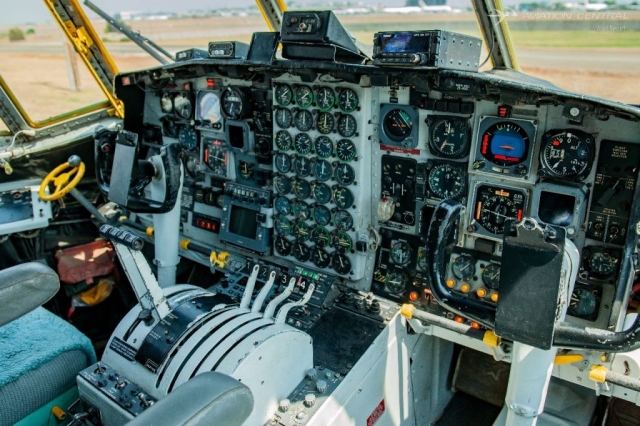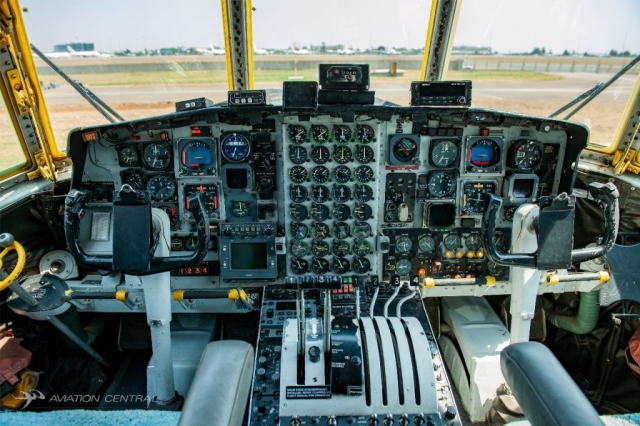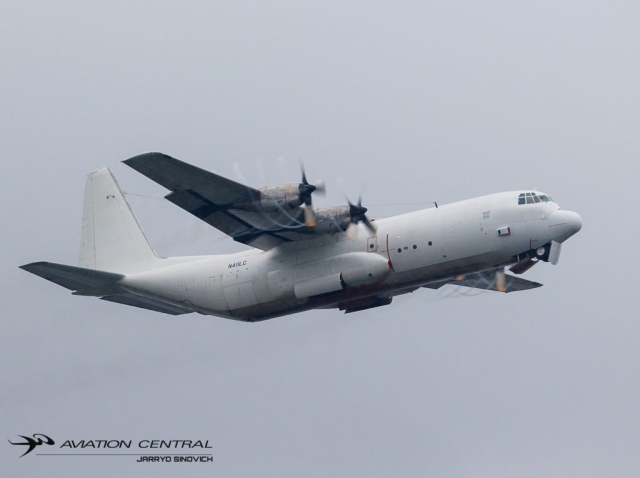Tag Archives: LockheedMartin
Lockheed Martin And Royal Bahraini Air Force Celebrate Bahrain’s First F-16 Block 70
Bahraini, American and Lockheed Martin officials today celebrated the first F-16 Block 70 for the Royal Bahraini Air Force today at Lockheed Martin [NYSE: LMT] in Greenville, South Carolina.
The Kingdom of Bahrain has a unique history with the F-16: It was the first F-16 operator in the Gulf Cooperation Council beginning in the early 1990s, and now is receiving the first F-16 Block 70.
“Today’s ceremony GREENVILLE, S.C., March 10, 2023 represents the next generation of the powerful and proven legacy of the F-16, and demonstrates Lockheed Martin’s commitment to advancing this program and getting this much-needed aircraft and its advanced 21st Century Security capabilities to the warfighter,” said OJ Sanchez, vice president, Integrated Fighter Group, which includes the F-16 program. “With the Block 70 iteration, we are transforming 4th generation for the next generation for the Royal Bahraini Air Force and other partners and allies around the world.”

This F-16 Block 70 jet is the first of 16 jets for Bahrain, and took its first flight on Jan. 24, 2023. From here, it will begin additional flight tests at Edwards Air Force Base before arriving in Bahrain in 2024.
Six countries have selected Block 70/72 aircraft. In addition to the current official backlog of 127 jets to-date to be built in Greenville, Jordan has signed a Letter of Offer and Acceptance (LOA) for 12 jets and Lockheed Martin has received a contract to begin its long-lead activities. Bulgaria has also signed an LOA for an additional eight jets for its fleet. Once these are finalized, the backlog will increase to 147.
“The F-16 celebrated today was built by our talented, committed workforce in Greenville,” said Danya Trent, vice president, F-16 Programs and Greenville site leader. “We are proud to call Greenville the global home of the F-16 and look forward to continuing to produce jets serving missions around the world.”
Last SAFAIR L100 leaves SA
On a cold and wet Saturday the 11th February saw SAFAIRs last Lockheed L100 Hercules leave South African soil for the very last time. This particular L100 will join the fleet of Lynden Air Cargo. Lynden Air Cargo is an American cargo airline based in Anchorage, Alaska, USA. It operates scheduled services and on demand charter, international and domestic flights, including services for the US military. Its main base is Ted Stevens Anchorage International Airport.

(SAFAIR) Safair Operations as it is known today was established in 1965. At the time it was known as Tropair (Pty) Ltd and was a general aviation charter company. In 1970 the company name changed to Safair Freighters (Pty) Ltd when the company was purchased by Safmarine and the new entity began operations on 18 March 1970. Its primary client in the 1980s was the South African Defence Force.

The company operated the largest fleet of L100 aircraft in the world. Humanitarian Aid and Relief operations has always been Safair’s “niche” market. Safair assisted aid and relief agencies such as the United Nations, World Food Programme, and the International Committee of the Red Cross in delivering much needed humanitarian aid to stricken regions on the African continent as well as other areas in the world where such assistance was required.
The L100-30 left with the new November registration of N411LC and its previous South African registration was ZS-OPS. She was built in 1978 as a Lockheed L-100-30 Hercules (L-382G) C/N 382-4799).

Lockheed L100 Speculations
Aircraft Configuration Possibilities/Operation
Flat floor/wooden floor
Roller system
Fuel Burn : ± 2700 litres per hour
300 kts maximum cruise speed
Seating capacity of up to 90 passengers on airline type seats *
Bulk liquid transport – up to 24 000 litres (fuel)
20 000 kg for more than 1 200 nautical miles
Short field landing and take-off capability
Aerial delivery of food and medicine (Air drops)
Transportation of sea containers, large vehicles/trucks, oversized cargo
External fuel tanks for increased range

Combination of freight and passengers
Wingspan 40.41m (132 ft 7″)
Length 34.37m (112 ft 9″)
Height 11.66m (38 ft 2″)
Maximum certified take-off weight 70 307kg (155 000lbs)
Maximum certified landing weight 61 235kg (135 000lbs)
Maximum certified zero fuel weight 57 727kg (127 000lbs)
Basic empty weight 34 545kg (76 000lbs)
Average APS weight 35 000kg (77 000lbs)
Landing Requirements
The maximum landing weight for the Hercules L100-30 is 135 000 lbs (61 235kg). At this weight the following landing distances are required.
Airfield Elevation Runway Length (zero wind)
Sea Level 4 800 ft
1 000 ft 5 000 ft
2 000 ft 5 200 ft
3 000 ft 5 300 ft
4 000 ft 5 500 ft
5 000 ft 5 700 ft
[02/11, 20:46] Neil Swart: Cargo compartment…
[02/11, 20:46] Neil Swart: Length 17.07m (54 ft)
Width 3.02m (10 ft 3″)
Height 2.74m (9 ft 3″)
Cubic capacity 140 cubic meter (excluding ramp)
Floor height (above ground) 0.99-1.04m (3 ft 3″-3 ft 5″)
Cargo floor Aircraft can be supplied with either a flat metal floor, a wooden floor or an adjustable roller system
In 2013, Safair created a low-cost carrier subsidiary called FlySafair. They currently operational with the first flight having taken place on 16th October 2014. FlySafair operates passenger flights between Cape Town, George, Gqeberha, Johannesburg, Lanseria, Durban and East London. This is the companies primary focus now and moved away from cargo operations!
U.S. donates COVID-19 protective gear to South African Health Services
The U.S. government and U.S. Africa Command (AFRICOM) delivered approximately $340,000 in personal protective equipment to the South African National Department of Health (NDoH), August 15.


The equipment, delivered by a U.S. Air Force C-130J, is bound for Gauteng, Western Cape, Eastern Cape, and KwaZulu Natal, where it will benefit front-line health workers.

AFRICOM purchased the supplies, which include N-95 masks, gloves, gowns and sanitizer, using Overseas Humanitarian, Disaster, and Civic Aid Appropriation (OHDACA) funds after the South African government made a formal request for assistance to the U.S. Embassy.

The command also is supporting the set-up of handwashing stations in Gauteng, Eastern Cape, and KwaZulu Natal, contributing $225,000 to this initiative. This brings the total value of U.S. support toward South Africa’s COVID-19 response to more than $46 million.


“U.S. Africa Command is focused on mission and the fight against COVID-19. We’ve been working in close coordination with the Department of State and United States Agency for International Development (USAID) to provide assistance where we can to the international COVID-19 response,” Lt. Gen. Kirk Smith, deputy commander, U.S. Africa Command.

“The contributions of critical personal protective equipment and supplies help South Africa and reflect our commitment to partnership in Africa,” he said.
The U.S. has had a long-standing relationship with South Africa. This relationship includes a commitment to improving security and military cooperation to advance peace and security in the region.

On the occasion of the C-130’s arrival, U.S. Ambassador to South Africa Lana Marks said, “We are so proud of our growing partnership with South Africa’s National Defense Forces and our cooperation to ensure peace in the region. This delivery of lifesaving equipment, critically needed here in South Africa, shows how we can leverage the infrastructure of our strong defense cooperation to further bolster the U.S. support to South Africa’s ongoing COVID-19 response.”

Earlier this summer, AFRICOM Foreign Humanitarian Assistance funds provided 11,064 face shields earmarked for the South African Military Health Service and two additional projects provided surgical face masks and protective face shields to assist the South African Government.
Lockheed Martin Announces Proactive Measures to Mitigate COVID-19 Impacts to F-35 Production
F-35 Production Employees Will Temporarily Adjust Schedules to Sustain Aircraft Delivery
FORT WORTH, Texas, May 19, 2020 /PRNewswire/ — In response to previously reported COVID-19 F-35 supplier delays, Lockheed Martin (NYSE: LMT) is taking proactive measures to mitigate impacts and position the program for the fastest possible recovery by adjusting work schedules, maintaining specialized employee skillsets, and accelerating payments to small and vulnerable suppliers, to continue meeting customer commitments.

Today Lockheed Martin and the International Association of Machinists and Aerospace Workers (IAM) agreed to a temporary alternate work schedule for F-35 production line employees in Fort Worth to maintain their skilled workforce.
The new schedule, which will begin May 23, divides each shift into three groups. On a rotation, each group will work for two weeks and then will have a week off. During the adjusted three-week work schedule, employees who work 96 hours or more will be compensated an additional 24 hours for their off week while receiving full pay and benefits.

The alternate schedule allows Lockheed Martin to staff the production line to meet a slower workflow resulting from supplier delays. In addition, it provides a work rhythm that retains the expertise of the talented workforce and provides opportunities to adjust work to better support production.
“These are challenging times, but managing tough challenges is when the F-35 program performs at its best. The alternate work schedule maintains the specialized skillset of the employees and provides opportunities to for us to adjust our workflow to account for supplier delays due to COVID-19,” said Aeronautics Executive Vice President Michele Evans. “Our F-35 workforce is the best in the world at what they do, and we will continue to deliver on our customer’s mission.”

The temporary alternate work schedule agreement will continue for its first three-week cycle. The company will then evaluate business needs and can alter the schedule as needed with the option to discontinue as warranted or continue until Sept. 4. Lockheed Martin and the IAM have also agreed to allow employees to volunteer to be furloughed for 30 days where they maintain their benefits but forgo pay during this period.





































